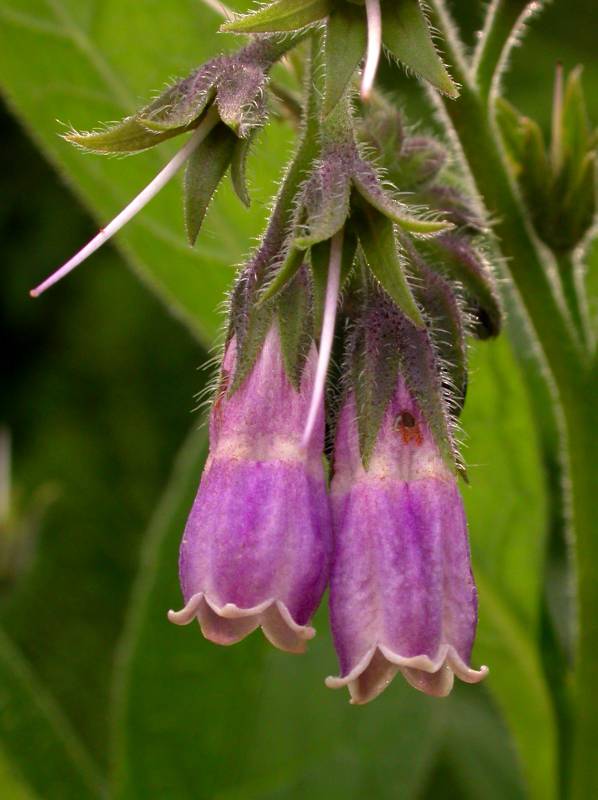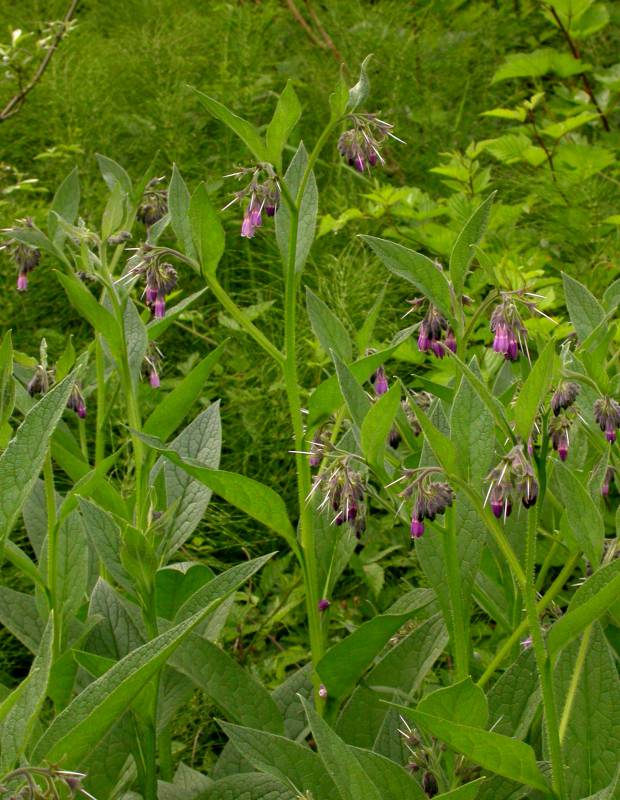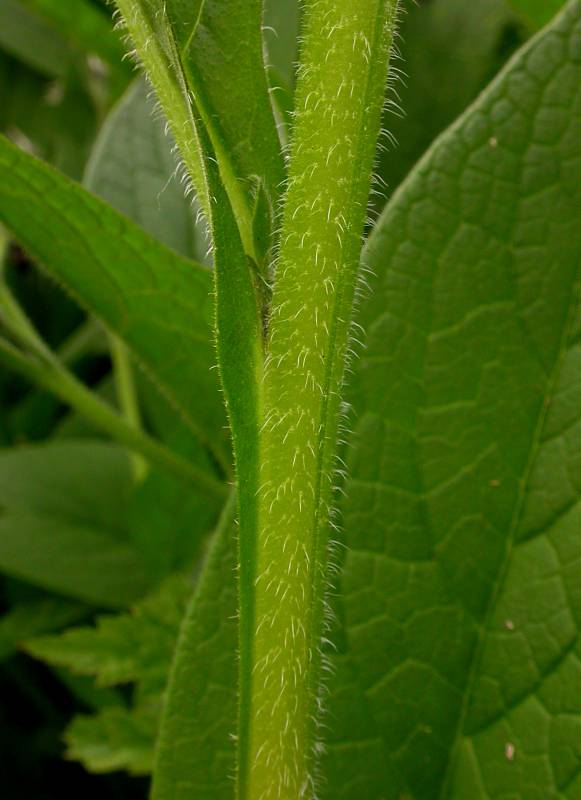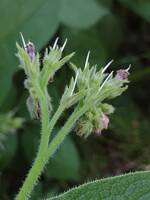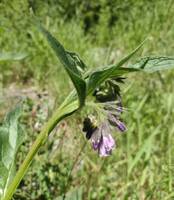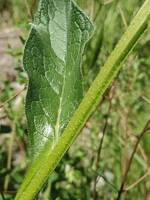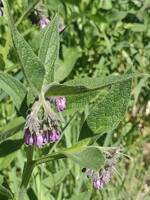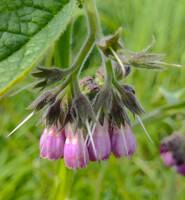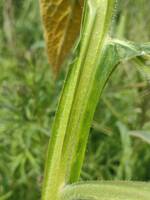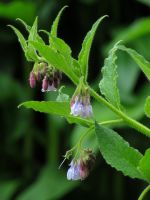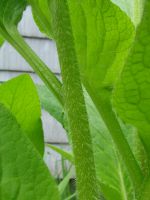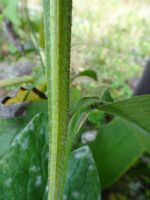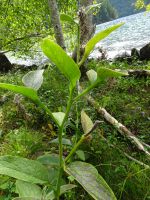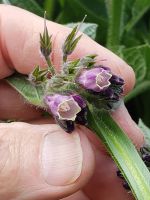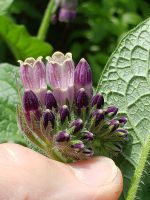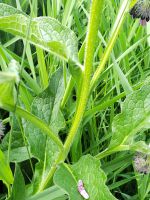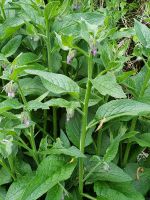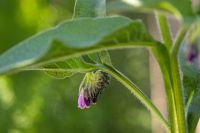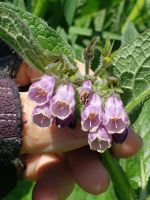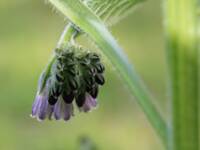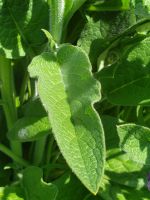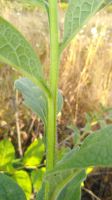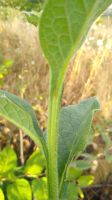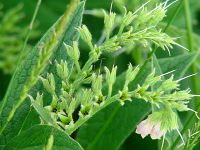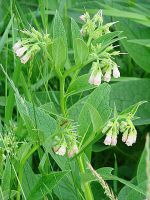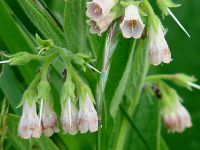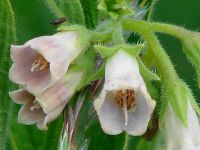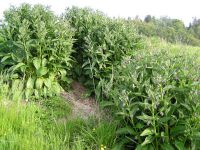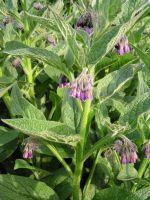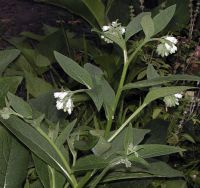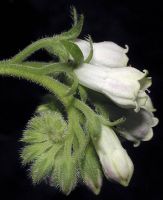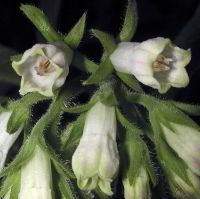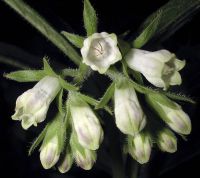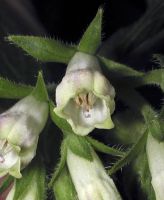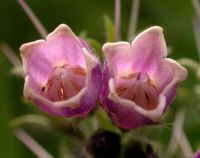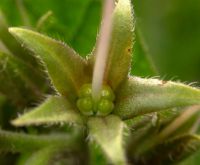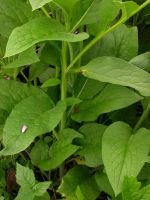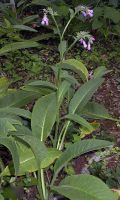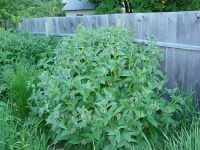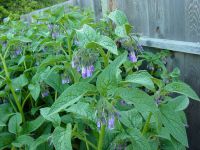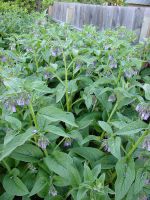Distribution: Occurring chiefly west of the Cascades crest in Washington; British Columbia to California, east to the Rocky Mountains, northern Great Plains, and eastward from Great Lakes region to the Atlantic Coast.
Habitat: Escaped from cultivation, often found in disturbed areas.
Flowers: May-August
Origin: Introduced from Europe
Growth Duration: Perennial
Conservation Status: Not of concern
Pollination: Bees, flies
Coarse, stiff-hairy perennial from a taproot, the several erect stems 3-12 dm. tall, winged from the leaf bases.
Basal leaves large, petiolate, the blade ovate or lance-ovate, 15-30 cm. long and 7-12 cm. wide; cauline leaves ample, gradually reduced upward and becoming sessile.
Inflorescence of several small, naked clusters at the branch tips; calyx 5-7 mm. long, cleft to below the middle into 5 lobes; corolla ochroleucous or dull blue, 1.5 cm. long, bell-shaped, the throat much longer than the 5 lobes; the 5 hairy appendages at the top of the corolla tube narrow and elongate; style exerted; nutlets attached at the base in a pit.
Nutlets 4, slightly wrinkled, keeled, 4 mm. long, brownish-black, with a basal attachment.
Publication: Sp. Pl. 1: 136. 1753.
PNW Herbaria: Specimen records of Symphytum officinale in the Consortium of Pacific Northwest Herbaria database
WA Flora Checklist: Symphytum officinale checklist entry
OregonFlora: Symphytum officinale information
E-Flora BC: Symphytum officinale atlas page
CalPhotos: Symphytum officinale photos

